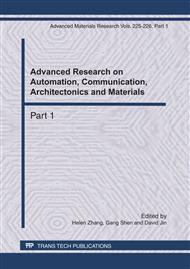p.531
p.536
p.540
p.546
p.550
p.556
p.560
p.565
p.569
Analysis of TIG Arc Spatial Radiation Based on Scanning Method
Abstract:
The article collected radiation intensity of TIG arc plasma in different dimensions and analyzed arc spectrum by establishing horizontal scanning system of plasma. Choose Fe and Ar characteristic spectral line as the subjects; acquire the distribution of arc radiation in different dimensions through Abel conversion; calculate temperature of plasma using Boltzmann. The results indicated that the position of strongest radiation is about 1mm from the tungsten pole, then it gradually weakens along the radial direction and the gradient of Ar spectral line is greater. The lowest temperature is near the base metal and the highest one is near tungsten pole.
Info:
Periodical:
Pages:
550-555
Citation:
Online since:
April 2011
Authors:
Keywords:
Price:
Сopyright:
© 2011 Trans Tech Publications Ltd. All Rights Reserved
Share:
Citation:


